Wurtsmith, Paul Bernard, born 09-08-1906, in Detroit, Wayne County, Michigan, 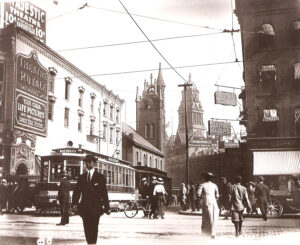 United States, the eldest of three sons of Frederick “Fred” Bernard Wurtsmith,
United States, the eldest of three sons of Frederick “Fred” Bernard Wurtsmith, 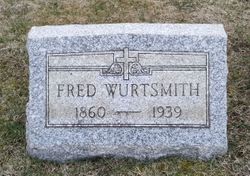 a railroad engineer on the Pere Marquette Railroad, and his wife Ella, born Globensky Wurtsmith.
a railroad engineer on the Pere Marquette Railroad, and his wife Ella, born Globensky Wurtsmith.  Paul was educated at Holy Redeemer Grammar School
Paul was educated at Holy Redeemer Grammar School 
 and Cass Technical High School in Detroit.
and Cass Technical High School in Detroit.  In his teenage years he earned some money working as a copy boy at The Detroit News
In his teenage years he earned some money working as a copy boy at The Detroit News  and in his spare time he worked on a Ford Model-T hot rod. Paul attended the University of Detroit, where he earned a degree in aeronautical engineering.
and in his spare time he worked on a Ford Model-T hot rod. Paul attended the University of Detroit, where he earned a degree in aeronautical engineering.
Wurtsmith enlisted in the U.S. Army Air Corps  as a flying cadet on 04-08-1927. On earning his wings through the successful completion of flight training at Kelly Field, San Antonio, Texas, he was directly commissioned as a second lieutenant in the Air Reserve on 23-06-1928. On 02-02-1929, he received a regular commission in the Army Air Corps. He married Irene Gillespie. The couple had no children. Wurtsmith joined the 94th Pursuit Squadron
as a flying cadet on 04-08-1927. On earning his wings through the successful completion of flight training at Kelly Field, San Antonio, Texas, he was directly commissioned as a second lieutenant in the Air Reserve on 23-06-1928. On 02-02-1929, he received a regular commission in the Army Air Corps. He married Irene Gillespie. The couple had no children. Wurtsmith joined the 94th Pursuit Squadron 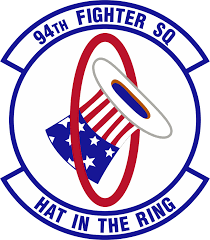 , the famed World War I “Hat in the Ring” Squadron, at Selfridge Field, Michigan. Over the next 13 years, he served in instructional and command positions. He won the Mitchell Trophy Air Race
, the famed World War I “Hat in the Ring” Squadron, at Selfridge Field, Michigan. Over the next 13 years, he served in instructional and command positions. He won the Mitchell Trophy Air Race 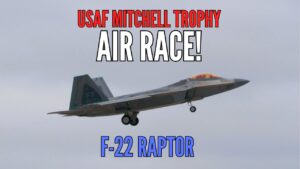 in 1930. On 01-10-1934, he was promoted to first lieutenant and was temporary captain from 07-08-1935 to 16-06-1936 before being promoted substantively on 02-02-1939. He graduated from the Air Corps Tactical School in 1939.
in 1930. On 01-10-1934, he was promoted to first lieutenant and was temporary captain from 07-08-1935 to 16-06-1936 before being promoted substantively on 02-02-1939. He graduated from the Air Corps Tactical School in 1939.
Wurtsmith commanded the 17th Pursuit Squadron  at Selfridge Field from September 1939 to July 1940, then the 41st Pursuit Squadron
at Selfridge Field from September 1939 to July 1940, then the 41st Pursuit Squadron  until January 1941. Still at Selfridge Field, he served with the 50th Pursuit Group
until January 1941. Still at Selfridge Field, he served with the 50th Pursuit Group 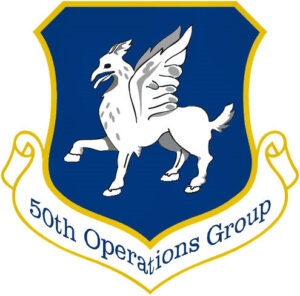 until December 1941, when he assumed command of the 49th Pursuit Group
until December 1941, when he assumed command of the 49th Pursuit Group 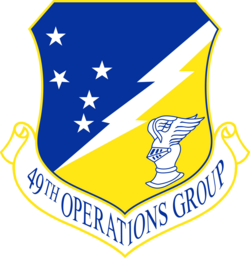 at Key Field, Mississippi, shortly after the United States entered the war following the Japanese bombing of Pearl Harbor.
at Key Field, Mississippi, shortly after the United States entered the war following the Japanese bombing of Pearl Harbor.
The 49th Pursuit Group was soon on its way to fight the Japanese in the South West Pacific. Arriving in Australia in February 1942, the 49th Pursuit Group moved to the Darwin area in March and April 1942. By this time, Darwin had been bombed several times. The 49th Pursuit Group became its principal defense. Conditions in the area were still primitive, and spare parts and equipment were scarce. Lacking adequate logistical support, the Americans were heavily dependent on their Australian allies. Morale in Darwin was low, but the sight of Wurtsmith’s aircraft patrolling the skies provided an important boost.
Between December 1941 and March 1942, over 300 P-40 Kittyhawks, 100 P-400 and 90 P-39 Airacobras had been sent to Australia; of these, around 125 had been lost to enemy action in the Dutch East Indies campaign, 75 had been transferred to the RAAF, 74 were under or awaiting repair and perhaps another 100 had yet to be completely assembled. On 18 March, 33 P-39s, 92 P-40s and 52 P-400s were on hand. There were three USAAF pursuit groups in Australia, the 8th, 35th and 49th, but Wurtsmith’s was the only one considered combat ready. Of the 102 pilots in his group, only Wurtsmith, with 4,800 hours of pursuit time, and his executive officer, Major Donald Robert Hutchinson,  with 2,600 hours, were veteran pilots. Five others had more than 600 hours and nine had about 15 hours. The remaining 89 pilots had no pursuit time at all.
with 2,600 hours, were veteran pilots. Five others had more than 600 hours and nine had about 15 hours. The remaining 89 pilots had no pursuit time at all.
The P-40s were better armored and faster in level flight than the Japanese fighters they were up against, mostly Mitsubishi A6M Zeroes, and could outdive them. On the other hand, the Japanese fighters had greater range, could outclimb the P-40, and were far more maneuverable. For an American P-40 pilot, risking a dogfight with a Japanese fighter was practically suicidal.
Wurtsmith attempted to develop tactics that would exploit the strengths of the P-40 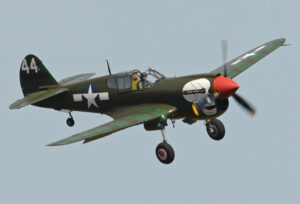 and minimize its weaknesses. The two-plane element was fixed as the chief unit of combat, and individual dogfighting was strictly prohibited. The P-40s would attempt to dive into a Japanese formation, attack, and then continue diving at a speed the Japanese fighters could not match. Above all, Wurtsmith attempted to make sure that he had enough P-40s in commission to outnumber the Japanese. The efforts of the ground crews and service troops made this possible. By May 1942, he had lost seven P-40s and three pilots while claiming the destruction of 38 Japanese aircraft. The heaviest Japanese attack had been by nine fighters and 24 bombers, which Wurtsmith had met with 50 P-40s; the P-40 pilots claimed 11 Japanese aircraft shot down. May was the first month that passed without a raid since January but the Japanese returned on four consecutive days in June, three of these raids consisting of 18 to 20 fighters and 27 bombers. That month nine P-40s and 13 Japanese aircraft were lost. Wurtsmith was promoted to Colonel on 06- 07-1942. Between March 1942 and January 1943, his fighters claimed to have downed 78 enemy aircraft.
and minimize its weaknesses. The two-plane element was fixed as the chief unit of combat, and individual dogfighting was strictly prohibited. The P-40s would attempt to dive into a Japanese formation, attack, and then continue diving at a speed the Japanese fighters could not match. Above all, Wurtsmith attempted to make sure that he had enough P-40s in commission to outnumber the Japanese. The efforts of the ground crews and service troops made this possible. By May 1942, he had lost seven P-40s and three pilots while claiming the destruction of 38 Japanese aircraft. The heaviest Japanese attack had been by nine fighters and 24 bombers, which Wurtsmith had met with 50 P-40s; the P-40 pilots claimed 11 Japanese aircraft shot down. May was the first month that passed without a raid since January but the Japanese returned on four consecutive days in June, three of these raids consisting of 18 to 20 fighters and 27 bombers. That month nine P-40s and 13 Japanese aircraft were lost. Wurtsmith was promoted to Colonel on 06- 07-1942. Between March 1942 and January 1943, his fighters claimed to have downed 78 enemy aircraft.
In August 1942, Major General George Churchill Kenney  assumed command of the Allied Air Forces in the South West Pacific Area, becoming the senior Allied air officer under the theater commander, General Douglas MacArthur.
assumed command of the Allied Air Forces in the South West Pacific Area, becoming the senior Allied air officer under the theater commander, General Douglas MacArthur.  Kenney split the Allied Air Forces into Australian and American components, the American part becoming the re-formed Fifth Air Force
Kenney split the Allied Air Forces into Australian and American components, the American part becoming the re-formed Fifth Air Force  in September 1942. Kenney concurrently commanded the Fifth Air Force, with Brigadier General Whitehead, Ennis Clement “Ennis the Menace”
in September 1942. Kenney concurrently commanded the Fifth Air Force, with Brigadier General Whitehead, Ennis Clement “Ennis the Menace” 
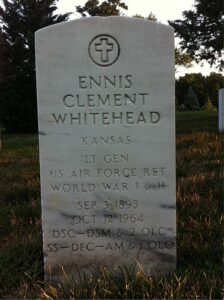 as his deputy. The major commands of the Fifth Air Force were the V Service Command under Major General Rush Blodget Lincoln,
as his deputy. The major commands of the Fifth Air Force were the V Service Command under Major General Rush Blodget Lincoln,
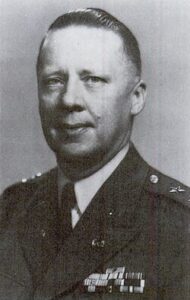
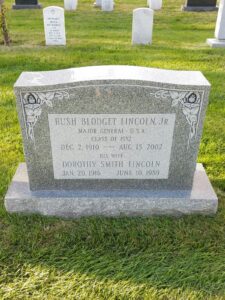 V Bomber Command under Brigadier General Kenneth Walker,
V Bomber Command under Brigadier General Kenneth Walker,
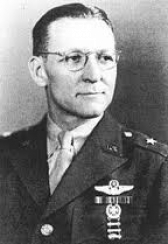
 and the V Fighter Command. Activated at Fort George Wright in April 1942 as V Interceptor Command, it was redesignated V Fighter Command in August. Wurtsmith assumed command on 11 November, with his headquarters at Port Moresby. Kenney told him that if he “made good”, he would be promoted to Brigadier General. If not, he would be sent home on a slow boat.
and the V Fighter Command. Activated at Fort George Wright in April 1942 as V Interceptor Command, it was redesignated V Fighter Command in August. Wurtsmith assumed command on 11 November, with his headquarters at Port Moresby. Kenney told him that if he “made good”, he would be promoted to Brigadier General. If not, he would be sent home on a slow boat.
On 30-01-1945, Wurtsmith replaced Major General St. Clair Streett 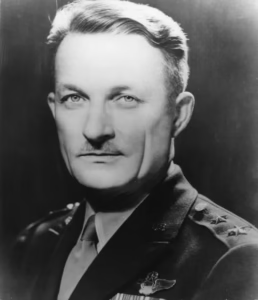
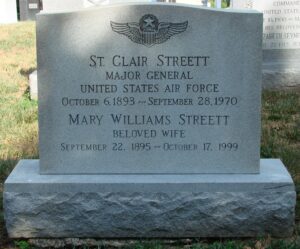 as commander of the Thirteenth Air Force.
as commander of the Thirteenth Air Force. 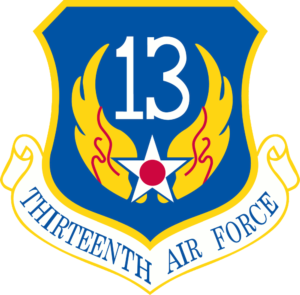 He was promoted to the rank of Major General on 19-03-1945. The Thirteenth Air Force was tasked with the support of Lieutenant General Robert Lawrence Eichelberger‘s
He was promoted to the rank of Major General on 19-03-1945. The Thirteenth Air Force was tasked with the support of Lieutenant General Robert Lawrence Eichelberger‘s

 Eighth United States Army in the Victor series of operations to clear the Southern Philippines that included the Invasion of Palawan, Battle of the Visayas, and the Battle of Mindanao. Operating under Air Vice Marshal William Dowling Bostock’s
Eighth United States Army in the Victor series of operations to clear the Southern Philippines that included the Invasion of Palawan, Battle of the Visayas, and the Battle of Mindanao. Operating under Air Vice Marshal William Dowling Bostock’s 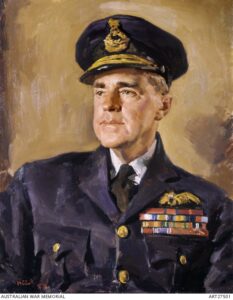 RAAF Command, the Thirteenth Air Force also supported Lieutenant General Sir Leslie Morshead’s
RAAF Command, the Thirteenth Air Force also supported Lieutenant General Sir Leslie Morshead’s  Australian I Corps in the Oboe series of operations against Japanese forces in Borneo.
Australian I Corps in the Oboe series of operations against Japanese forces in Borneo.
Wurtsmith relinquished command of the Thirteenth Air Force in July 1946 and returned to the United States, where he was assigned to the headquarters of the Strategic Air Command (SAC) at Washington, DC’s Bolling Field.
Death and burial ground of Wurtsmith, Paul Bernard.


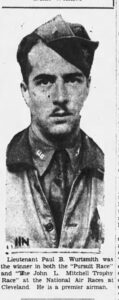

On 13-09-1946, with Wurtsmith at the controls, the Mitchell, 44-30227, set out for MacDill Field in bad weather, flying at 6,000 feet (1,800 m)—below the safe altitude for the area. At around 11:20 all on board  were killed when the aircraft crashed into Cold Mountain, about 20 miles (32 km) southwest of Asheville, North Carolina.
were killed when the aircraft crashed into Cold Mountain, about 20 miles (32 km) southwest of Asheville, North Carolina. 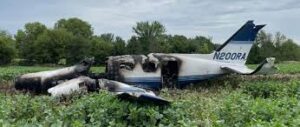 The official report listed the cause of the crash as “miscalculation of altitude”.
The official report listed the cause of the crash as “miscalculation of altitude”.
Wurtsmith’s remains were recovered from Cold Mountain and were interred in Arlington National Cemetery on 18-09-1946. In February 1953, the United States Air Force named Wurtsmith Air Force Base in Oscoda, Michigan, in his honor. Special guests at the dedication ceremony included his mother Ella, his widow Irene, his nephews Paul D. Wurtsmith and Fred Wurtsmith, and George Kenney. General Thomas Dresser White 
 told the crowd that the base was being named after a man who was “probably the best fighter pilot and fighter tactician in all of World War II”. In 1954, Ella Wurtsmith was named Michigan Mother of the Year. Among the letters recommending her for the honor was one from General MacArthur.
told the crowd that the base was being named after a man who was “probably the best fighter pilot and fighter tactician in all of World War II”. In 1954, Ella Wurtsmith was named Michigan Mother of the Year. Among the letters recommending her for the honor was one from General MacArthur.
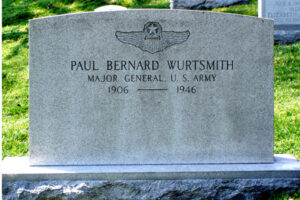
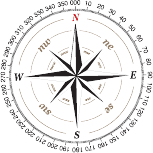



















Leave a Reply